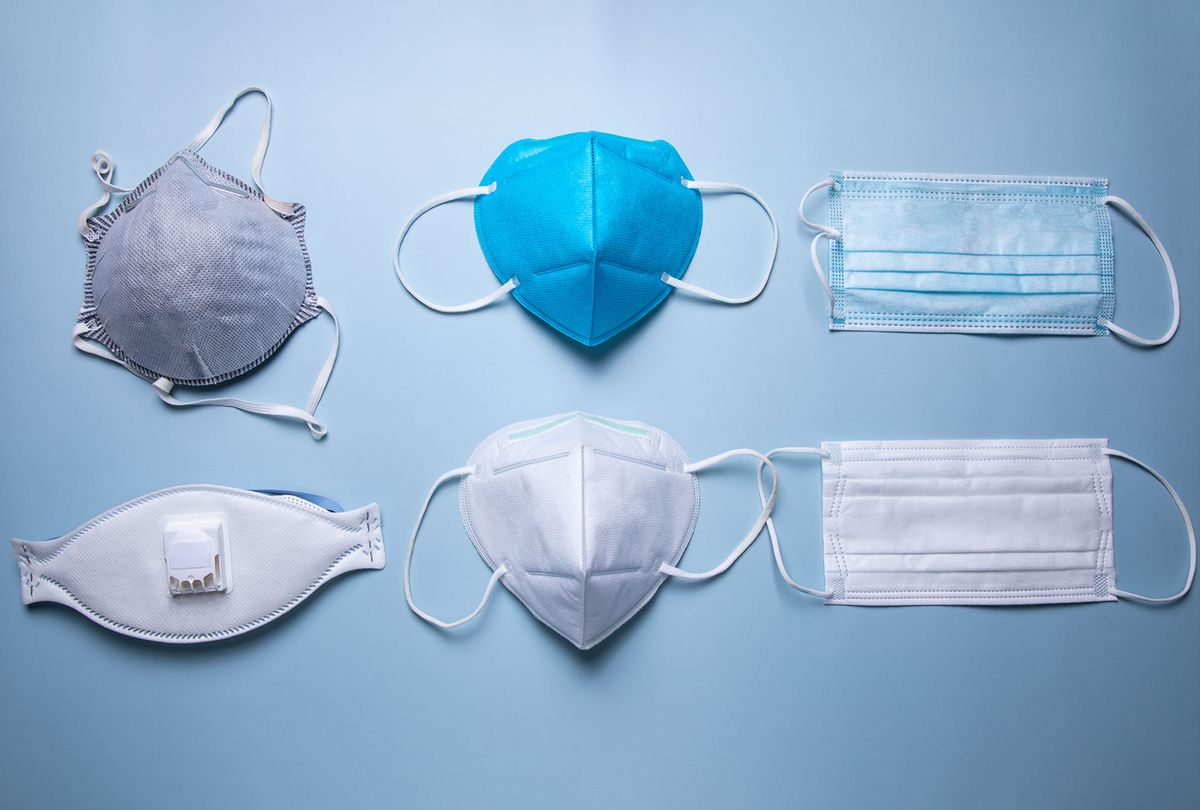As new, more contagious coronavirus variants emerge, cases continue to surge throughout the United States, leaving healthcare systems and their workers overwhelmed and exhausted. Unless we take immediate action, an estimated 200,000 additional Americans could die from COVID-19 by May. With vaccination still months away from most Americans, it is imperative that we use everything at our disposal to help bridge this gap in protection.
Fortuitously, there's an answer that's cheap, easy, and accessible: High-efficiency masks. These kinds of masks, which include the N95 respirators used by healthcare workers, could reduce the chances of contracting the coronavirus — thus help saving lives and helping speed the return of our economy.
Until now, America's national mask strategy has focused largely on a concept known as "source control." This uses low-tech, easily-sourced fabric or surgical masks to prevent someone who is infected from spreading the virus to others.
But the protection that fabric masks give the wearer can be limited, as some may block very few incoming aerosols. And while the material that surgical masks are made from is better at blocking aerosols, they still do not seal tightly to the face, which can allow the wearer to breathe in unfiltered air around the sides.
In contrast, high-efficiency masks like N95s and KN95s are designed to form a tight seal and use an electrostatic filter that can block most aerosols. In high-efficiency masks without exhalation valves, this high level of protection has been shown to work in both directions. This type of mask can help keep healthy people from getting sick while also preventing those infected from spreading disease.
This type of mask is already being used by other countries to help save lives. In November, Germany announced a 2.5 billion euro plan to supply high-efficiency masks to its 27 million citizens over the age of 60 or who have a medical condition that puts them at increased risk. Austria and the German state of Bavaria have gone even further by requiring everyone to use high-efficiency masks in stores and on public transportation.
We can follow their example. Michigan recently started giving out 3.5 million free KN95 masks in their "Mask Up and Mask Right" program. By expanding a program like this across the country, the Federal Government could prioritize high-efficiency mask production and equitably distribute them where they are needed the most. This way, essential workers, the elderly, and others at high risk can be protected while they await vaccination.
Even without government intervention, Americans can choose to purchase high-efficiency masks on their own. Though they have been in short supply, N95s are increasingly available to the general public. KN95s remain widely available. While N95s typically form a better seal than KN95 masks, both types perform similarly at filtering aerosols.
Over the past year, production has significantly increased and supply chains have shifted to prioritize distribution of N95s for healthcare workers. Hospitals generally purchase supplies through large medical distributors that are not available to the public. By buying high-efficiency masks from reputable consumer retailers, Americans are accessing stock that is intended for use by the public.
When selecting a mask, pay attention to the fit. Having a good seal to the face is important for maximal protection. Users should follow the manufacturer's instructions for a clear guide on how to wear them correctly. Typically, the seal can be checked by gently covering the mask with both hands and forcefully exhaling, feeling for any air leaks. Formal fit testing is not required when using this type of mask outside of work.
A new mask is not needed every day. Due to supply shortages, healthcare workers have learned that as long as the high-efficiency mask continues to fit, maintains its shape, the straps hold tight, and it is stored properly, they can be reused over a prolonged period of time. In Germany's high-efficiency mask program, participants are instructed to wear one mask per week.
Americans can still make the choice to better protect themselves and their loved ones. Upgrading from a cloth or surgical mask to a high-efficiency mask could help save lives during the wait for vaccines.
It is time we started using high-efficiency masks to protect ourselves and others to achieve more of the potential that respiratory protection can offer.
The views and opinions expressed in this piece are those of the authors and do not necessarily reflect the views and opinions of Massachusetts General Hospital, Harvard Medical School, Arizona State University, or the University of Arizona.



Shares